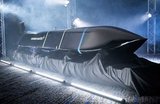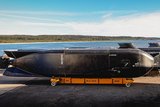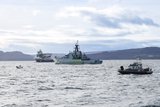BAE Systems, Beechcraft, CAE team for AIR 5428
BAE Systems has announced that it will team with industry partners CAE and Beechcraft to develop a potential solution for the Australian Defence Force’s (ADF’s) long awaited Air 5428 project.
Air 5428 intends to provide the Australian Air Force, Army and Navy with a new fixed wing Pilot Training System (PTS). The system will provide platforms for flight screening and cover all facets of undergraduate pilot training from basic flying up to entry into air force Lead-In Fighter and Operational Conversion Units.
BAE Systems will draw on its training, systems integration and sustainment capabilities; while CAE will utilise its simulation, training and support service experience. Beechcraft’s T-6C mission system will form the basis of the team’s bid.
John Quaife, general manager aviation solutions, BAE Systems, said: ‘Since 1992, BAE Systems’ training specialists have helped deliver flight screening and basic flight training for the ADF. Beechcraft and BAE Systems are also working together to support pilot training for the US Navy on the T-6 mission system.
‘Designed to meet the needs of undergraduate pilot training for the US, Canada and other NATO air forces, the T-6C has amassed more than two million flying hours and has proven its ability as a versatile, cost-effective platform.’
The Beechcraft T-6 military training aircraft is a proven primary aviation training system is in operation with eight air forces worldwide.
Quaife added; ‘CAE has extensive experience delivering and supporting T-6 training systems and proven partnerships with BAE Systems. The recent selection of CAE to provide three new full-mission simulators for the Hawk Lead-In Fighter is testament to its technical capability and local support it brings to the team.
‘These experiences and our combined track record in military flight training, complex project management and mission systems sustainment mean we can offer the Commonwealth a low risk, value for money solution to train the world’s best military aviators at a location of its choosing.’
More from Naval Warfare
-
![US Coast Guard pursues solutions to increase maritime domain dominance]()
US Coast Guard pursues solutions to increase maritime domain dominance
The USCG is seeking technologies, services and applications to better connect its assets and speed up the decision-making process.
-
![Canadian Coast Guard’s OOSV delivery is “major milestone” in fleet modernisation]()
Canadian Coast Guard’s OOSV delivery is “major milestone” in fleet modernisation
The Polar Class 6 platform is the largest CCG science-dedicated vessel and will operate on the country’s east coast.
-
![How the Anduril-HHI autonomous ship plan fits in with the US Navy’s MASC programme]()
How the Anduril-HHI autonomous ship plan fits in with the US Navy’s MASC programme
The new modular vessel is expected to be developed for both commercial and defence use, with a heavy focus on production speed and mission flexibility.
-
![Indo Pacific 2025: Autonomous systems reigned but can the Australian Defence Force afford it?]()
Indo Pacific 2025: Autonomous systems reigned but can the Australian Defence Force afford it?
Multiple autonomous systems and technologies were on display at this year’s Indo Pacific, but questions remain over how the Australian Department of Defence will balance the books.
-
![How the UK Royal Navy is powering up its hybrid fleet to combat new threats]()
How the UK Royal Navy is powering up its hybrid fleet to combat new threats
Since it announced its move towards a new “hybrid navy” earlier this year, the force has announced a number of new uncrewed technologies in the works.
-
![US and UK to begin Trident II D5 Increment 8 in October 2026]()
US and UK to begin Trident II D5 Increment 8 in October 2026
Trident II D5 Increment 8 will involve improvements to the shipboard navigation subsystem for the US Ohio and Columbia and the UK Dreadnought and Vanguard submarine classes.
























